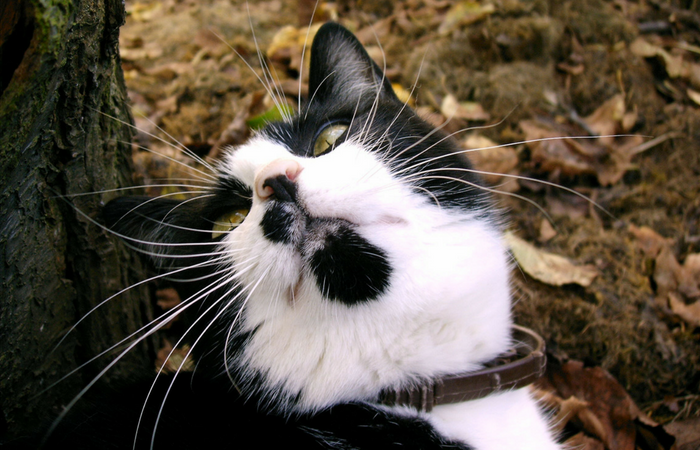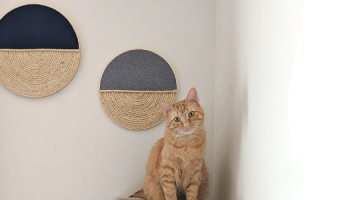We have four cats (yes, that is a lot). We have gone through ups and downs being cat parents. I feel like every other week we are discovering new things we should be doing for our cats or should not be doing. It is a struggle to feel like you are doing enough for the mute creatures that roam the house. Here are my tips and tricks for giving Kitty the best home after years of experience.
Some of you lovely people probably do everything in this list (and more!), and that is amazing. This list is designed for those little things that you just “didn’t know any better”. We’ve had several of those moments where we realized we were doing an utterly crap job and it made me feel so guilty. Looking back we never did any harm, but I hate thinking my cat could have had better, and I just “didn’t know any better”. Here’s to being better cat parents!
*I am not affiliated or compensated in any way by any of the companies or links used in this post. I just found this information very helpful and hope you do to!*
Tip #1: Get Better Food and Water Bowls
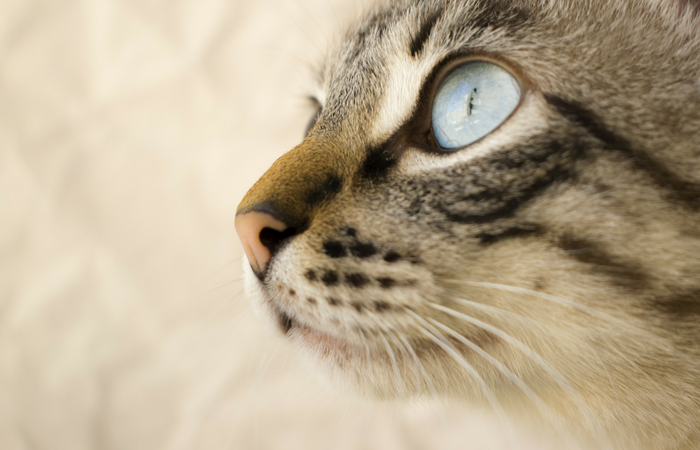
Use Metal Bowls
Now, when we first got cats, we just got the cheapest plastic automatic water and feeders we could. Just recently we noticed some acne looking spots on Cal’s chin. After a quick google search, I found out that cats can be allergic to plastic! WHAAA-?? I didn’t even know that was a thing.
If you have plastic dishes for your cat, I would recommend looking into stainless steel. Plastic can scratch and hold bacteria, isn’t as easy to clean, and can cause an allergic reaction in Kitty. Stainless steel bowls are more expensive, but they bar from bacteria, are easy to clean, don’t scratch, and won’t break if dropped. It’s definitely worth the money. Also, just because your cat isn’t showing signs now, they might later. It’s isn’t uncommon for cats to develop an allergy to plastic. So to save you a headache, just switch! You can also use ceramic dishes if they are made for pets. Some ceramic glazes contain lead but it’s not very common anymore. Or you could try glass but I have a hard time finding anything.
Here is a more in-depth article explaining how to pick out better bowls. In summary, get something other than plastic and look for something shallow and wide.
Use Wider Bowls
Cats can suffer from something called whisker fatigue. Cats will be more receptive to changing their bowls if the new ones don’t cramp their whiskers. I would recommend shooting for something that is between 8″-10″. This was what we did and our cats had no issues with their bowls switching (they actually drink more water now). Try looking in the dog section for large bowls (it drives me crazy that all cat stuff is doll-sized).
We also changed their food bowls to stainless steel and took this as an opportunity to get something better for their whiskers. When looking for a wet food bowl, look for something flat, short, and wide. We got these short, oval-shaped bowls, and our ‘picky’ cat isn’t as picky! Apparently, he was struggling to get the food into his mouth (we fed them on plates) and would eventually give up. With the new bowls, all of our cats are finishing their meals quickly.
We use these bowls for water (except not gold, couldn’t link the plain stainless steel). You’ll notice that with both bowls (water and wet food) that they are wide, shallow, and stainless steel.
Tip #2: Change Water Daily

Another plus to the new bowls we got, is that it is easy to dump and refill them every day. How would you like to drink week old water? The new bowls don’t hold much water and make it easier to clean and change daily. You will see your cats drink more water if it is fresh. Plus, cats can actually prefer cool water (who woulda thought). So, try different temperatures to see what your cat prefers to help promote drinking.
Tip #3: Keep Food Away from Water
Cats don’t like having their food and water near each other and may avoid drinking the water entirely if it is near food. Cats still have primal instincts and this is one of them, here it is explained further:
“Cats do not like to eat near their water. Cats consider water that is near food to be contaminated. This goes back to the fact that cats are hunters. When they catch prey, things can get messy, leaving nearby water contaminated. While our indoor cats are not usually catching prey, the instinct of the hunter is still strong.” – Cat Wisdom 101
Keep your food and water separated a much as possible. 5′-6′ should be enough or even better if separated by something (ours are separated by a bookcase).
Here are more tips to get your cat to drink more water.
Tip #4: Clean Food Bowls Every Three Days
If you give your cats dry food freely, you should be cleaning the food bowls every three days. The fat in the food can be a breeding ground for bacteria and no one wants to eat off that. If you give your cats wet food or dry food in portions throughout the day, you should be cleaning them every time you use them with hot water and a small amount of soap. You should run all food and water bowls through the dishwasher at least once a week.
Here are some tips on how to clean pet bowls.
Tip #5: Quality Cat Food

There is a lot of debate about dry vs. wet food. I’m not here to discuss that. You do you. However, make sure you know what your cat’s nutritional needs are.
Cats should not be fed grains, so try to look for a grain free option. Also, read the ingredients! You should try to find a wet cat food that is mostly meat (if not all meat). Cat food does have added vitamins and minerals to give your cat a healthy, balanced diet, but you should look for something with the first ingredient being meat and contains the least amount of plant ingredients. Also, you should avoid fish due to high mercury and phosphorus levels, but it is okay in small amounts (I would avoid salmon and tuna like the plague as it has the highest mercury levels). Here is an article explaining the best proteins for your cat.
You can do some research online about the best cat food brands and pick the best option for your price range. If you feed dry, try to at least find grain free food with the least amount of ingredients. Don’t forget to price check! Amazon and Chewy tend to have way better prices than big box pet stores, be sure to look around and find the best deal.
Tip #6: Watch Out for Food Allergies
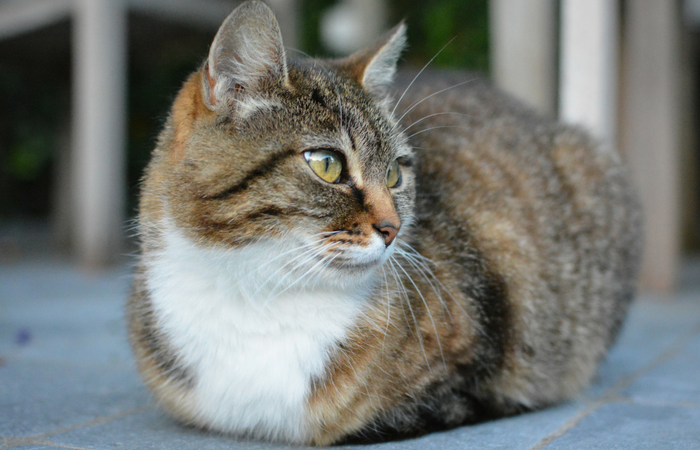
Cats can develop an allergy to certain foods they were once fine with before. If your cat is throwing up often, has diarrhea, is losing fur, or has skin lesions, consider switching their food. One of our cats is allergic to turkey and get the runs every time he eats it. Here are the most common food allergies in cats and symptoms.
Tip #7: Human Food is Not Kitty Food
There are a lot of foods that are very poisonous/toxic to cats. Onions and garlic are very toxic to cats and can even cause death if eaten in somewhat small quantities. Every time I cut up onions and garlic I always end up getting a few pieces on the floor, but now I am way more careful about it knowing this allergy. So, keep your kitchen clean and make sure Kitty isn’t eating random things off the floor.
Here is a list of common foods that are toxic for your cat.
Tip #8: Know Your Plants
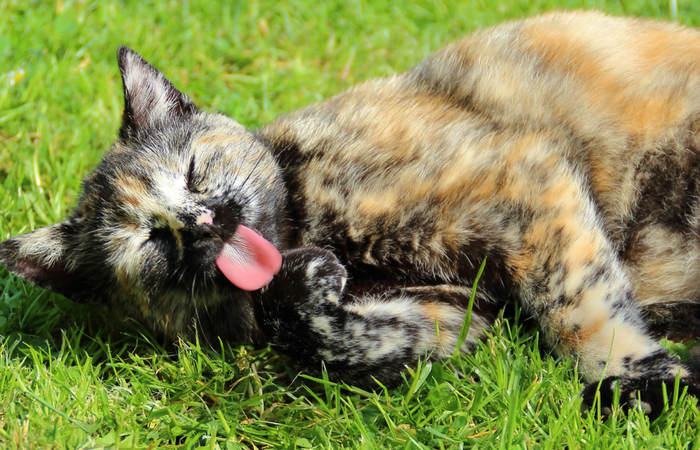
There are more indoor plants that are toxic to cats than not. Be sure to research plants before buying them and check what plants you already have to make sure a little plant nom from Kitty won’t end up in a vet visit.
Here is a list of safe indoor plants.
Tip #9: Provide Verticle Space

Cats love to be up high. They are natural climbers and love a little verticle space. An easy way to achieve this is through cat trees. Before you wince thinking of the price, give Chewy a try. We get our cat trees from them and they are durable, easy to build, and a fraction of the cost compared to big box pet stores. We have this one and this one, but they are always running sales so there may be an even better deal out there. We really like them and they are seriously cheap.
Another way to get verticle space is to intentionally create it with your furniture. We have a large wardrobe that has a flat top and is about six feet tall. We also have a dresser that is about four and a half feet tall. The cats can easily get on the dresser and then the wardrobe. We place a few beds on top of the wardrobe and it is now their collective favorite spot in the bedroom.
You can also use shelving to give verticle space, but I think it is unsafe, and not very pleasing to a cat. But, if this works for you, go ahead.
Here are 5 creative ways to give your cat more verticle space.
Tip #10: Cat Scratchers
There’s a reason cat scratchers are everywhere. Cat’s love to dig into some cardboard. Get cat scratchers not only to please Kitty but to save your couch. Again, you can find really cheap scratchers and refills on Chewy. You can also check the big box pet store clearance section and you just may find one if you’re lucky!
Here’s an article detailing why cats scratch and how to pick a good scratching post for your cat.
Tip #11: Multiple Nap Spots

Cats love to nap, and I think it’s important to provide a few spaces for them. Our cats aren’t huge fans of cat beds (I actually think they actively avoid them knowing I spent money on it for them, but I digress). We use small to medium cardboard boxes that are shallow (2″-3″ tall) stuffed with blankets, and our cats love it. They also have nap spots on the cat trees and our wide window sills. Just try to create spots if you can.
Tip #12: Toy Variety

I hear so many people saying their cat doesn’t like any toys, then I ask what they have tried and found out they stopped after their cat didn’t like mice or balls. We have four cats and they all have a favorite toy. Theo loves crinkle balls, Cal loves mice, Oliver loves feathers, and Sammy loves this weird tube thing with two feathers sticking out the ends. Every time I see a new/weird looking toy for a few bucks, I always pick it up. I never know if they will like it or not, but generally, someone will like it.
Sammy is our most difficult and lazy cat, and I finally found a toy that makes him leap out of his loaf and lose his freaking mind for about 5 minutes. It’s great. If you have tried a lot, try Da Bird (you can find it on Amazon, Chewy, and in big box pet stores). It’s a cat toy that I always get friends and I’ve never had a cat not like it. Here is an article on how to get lazy cats to play.
Toy variety is also important to fully satisfy a cats intelligent, emotional, and physical needs.
Tip #13: Watch Out for Broken Toys
Toys break, it’s just a reality. With the demon claws and vampire teeth our furballs sport, it is bound to happen. When toys break, immediately throw them away. Cats can easily choke on or swallow small pieces and it could end up in a vet visit or very uncomfortable poop for Kitty.
Tip #14: CLEAN YOUR DARN CAT BOXES
I cannot believe the number of people that get a kitten and then never clean up its poop. Litter boxes need to be scooped daily and completely changed out monthly. We wake up in the mornings and I scoop the litterboxes as Derek gets fresh water for the cats. It takes me about 5 minutes to clean 4 litter boxes. I actually dread cleaning litter boxes that haven’t been scooped in a few days because it takes way longer and is way harder to get massive clumps of urine out. Plus, scooping every day will make your house smell better and give cats enough litter to cover their business. We also top off the boxes about halfway through the month.
Then, on the first of every month, we completely empty the litter boxes, wipe them out with a vinegar-water solution (don’t want it to smell like chemicals and put the kitties off) and some paper towels. Then we fill them back up with fresh litter and go on with our day.
Here’s an article detailing litter box set-up and maintenance.
Tip #15: Make More Frequent Vet Visits
Going to the vet is very important to make sure Kitty is doing well. Go to the vet at least once a year for a wellness check. If you cat starts to vomit, have diarrhea, is lethargic, stops eating/drinking, is having difficulty going to the bathroom or using the bathroom outside the litter box, go to the vet. These are common signs something is not quite right and cats are notorious for showing no signs or symptoms (even if they are in a massive amount of pain).
Thank you so much for reading and leave me a comment below if there are other things you discovered that you just “didn’t know any better”.
I also write recipes, go on adventures, and have a podcast.
Have a wonderful day and thanks for trying to be the best cat parent you can be!


